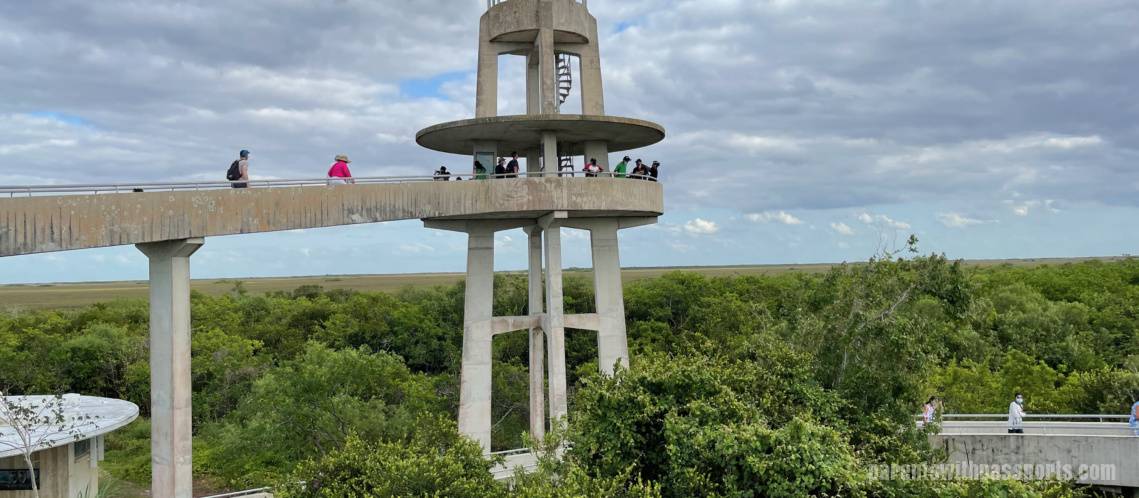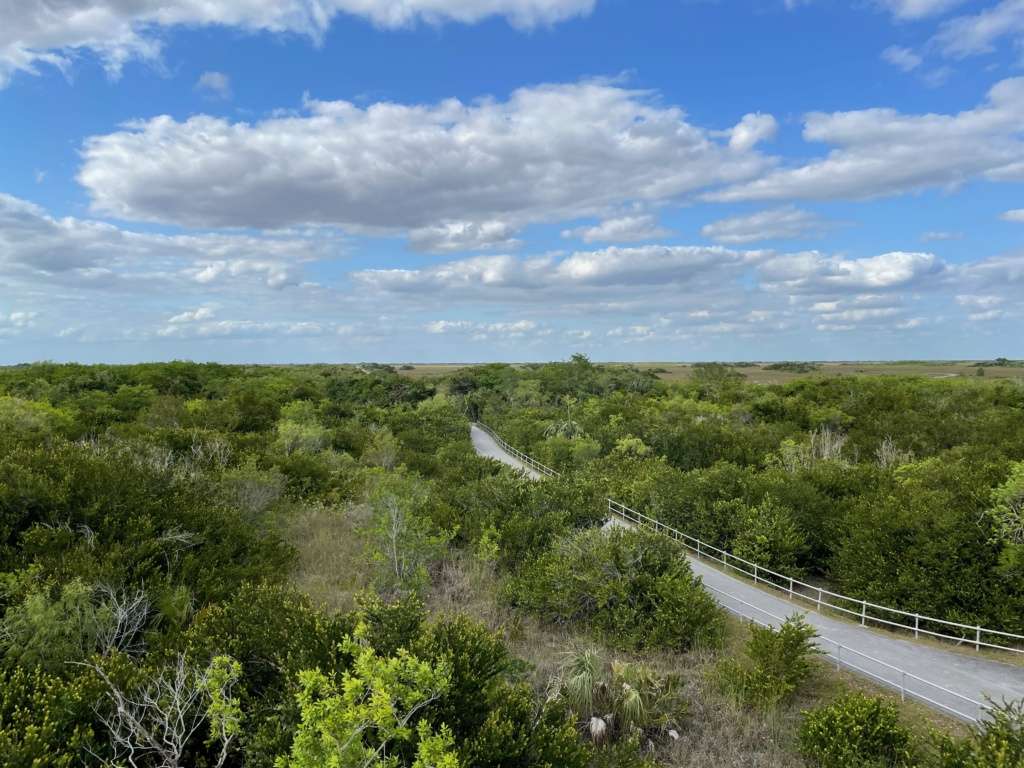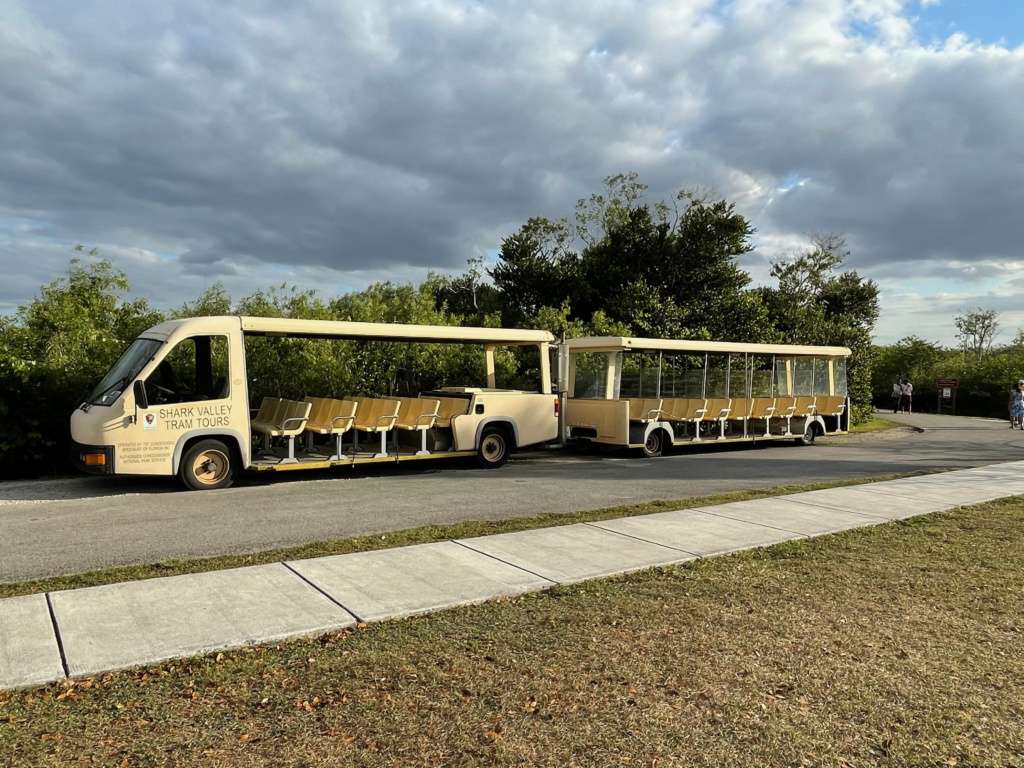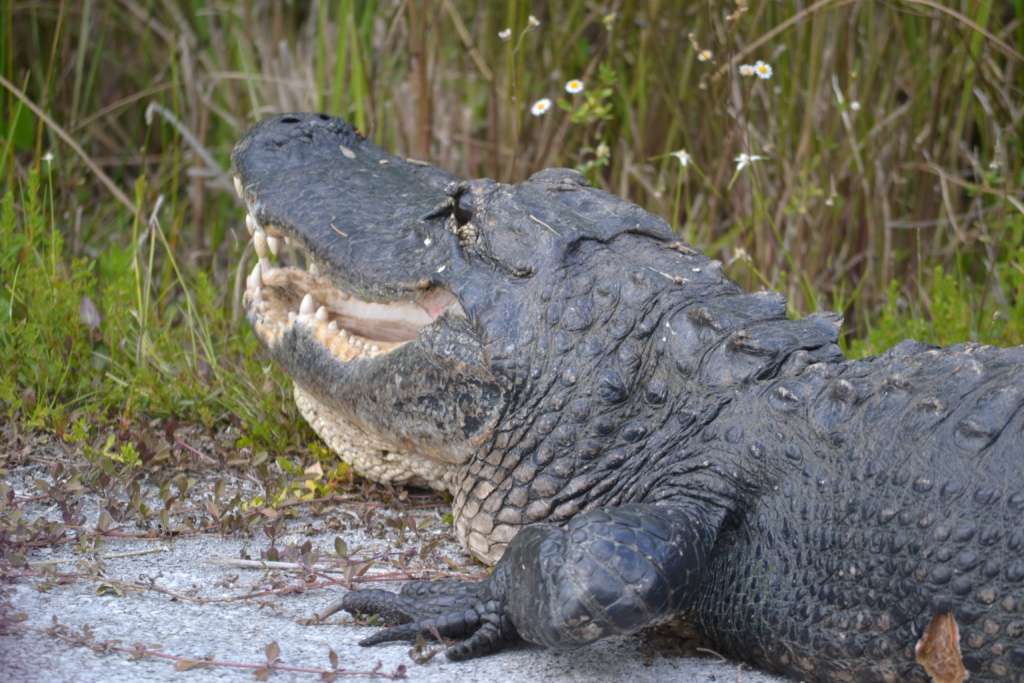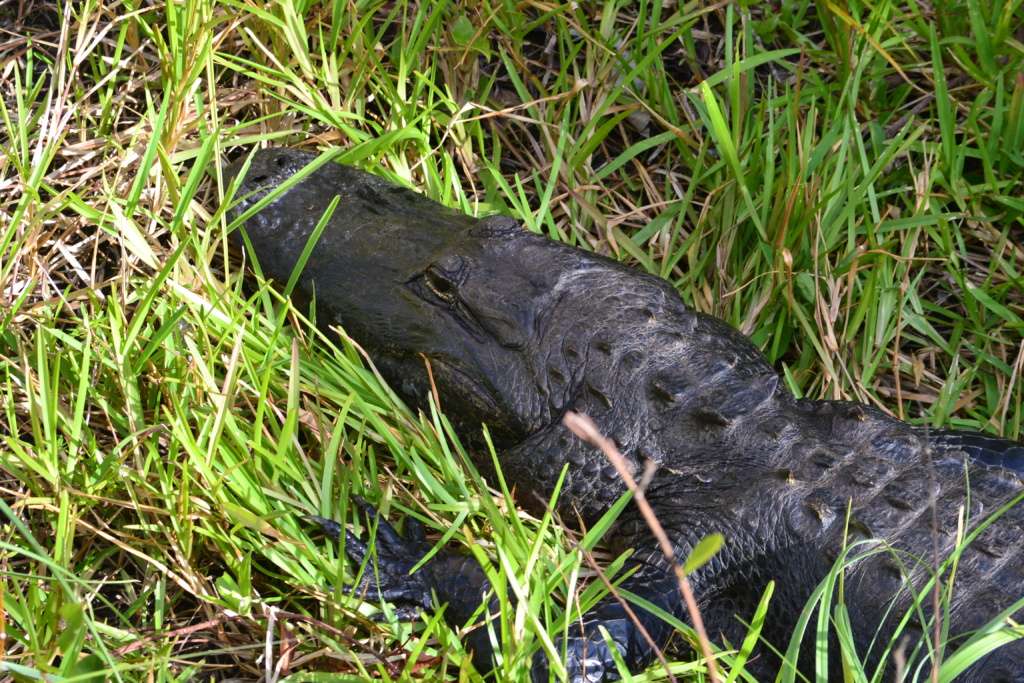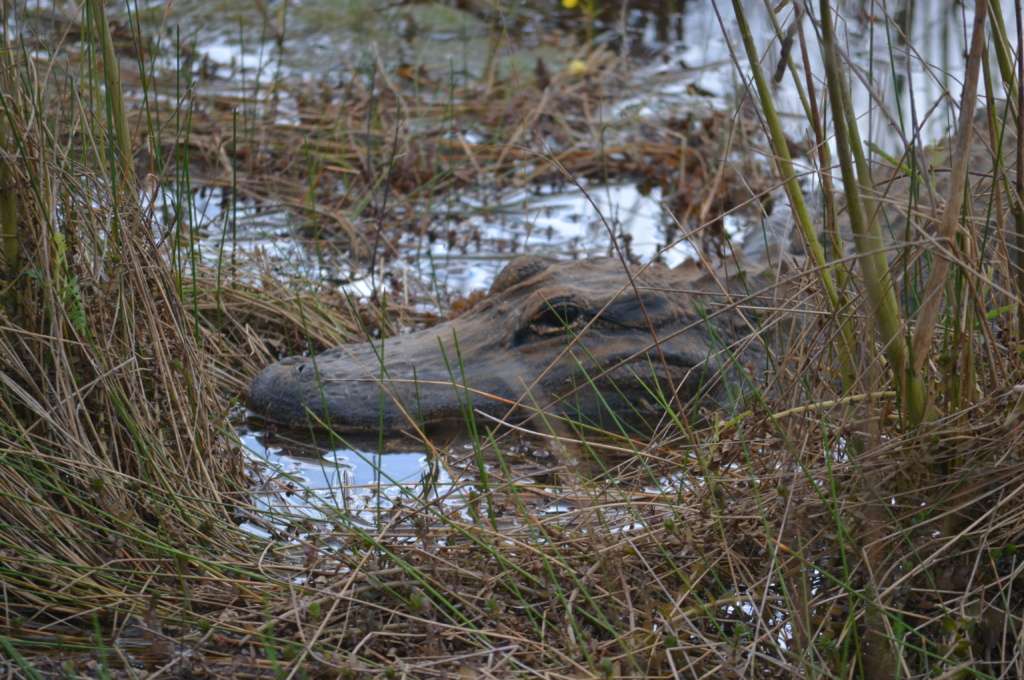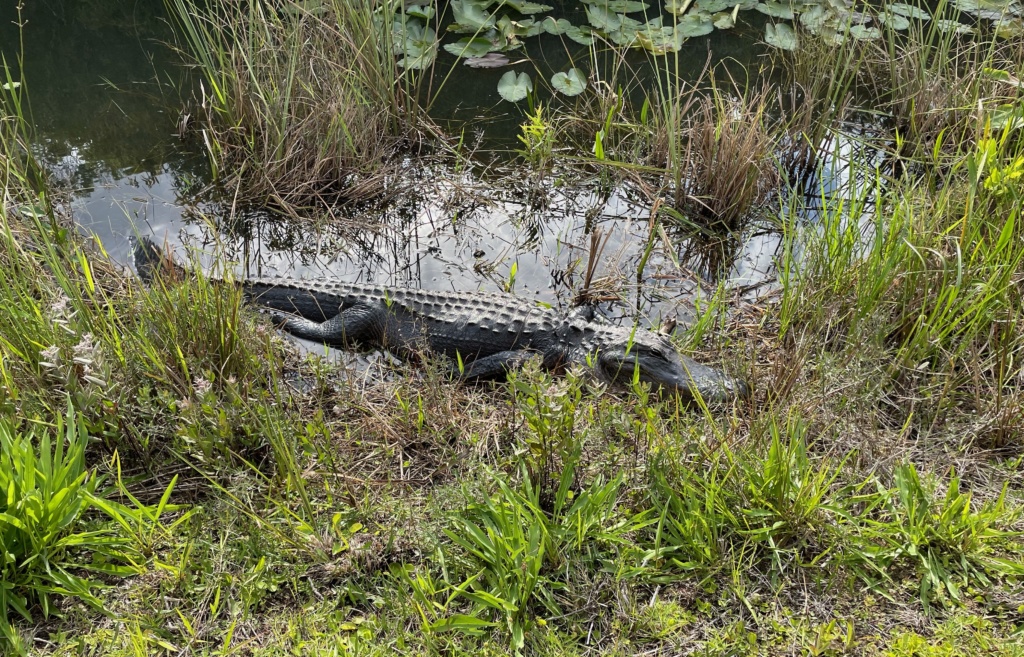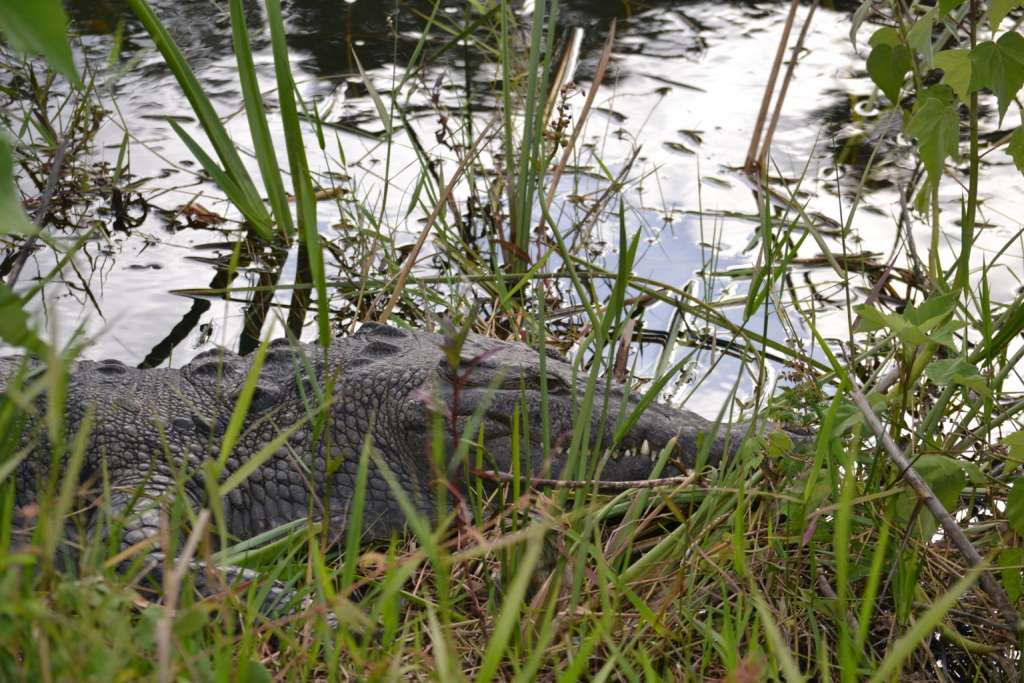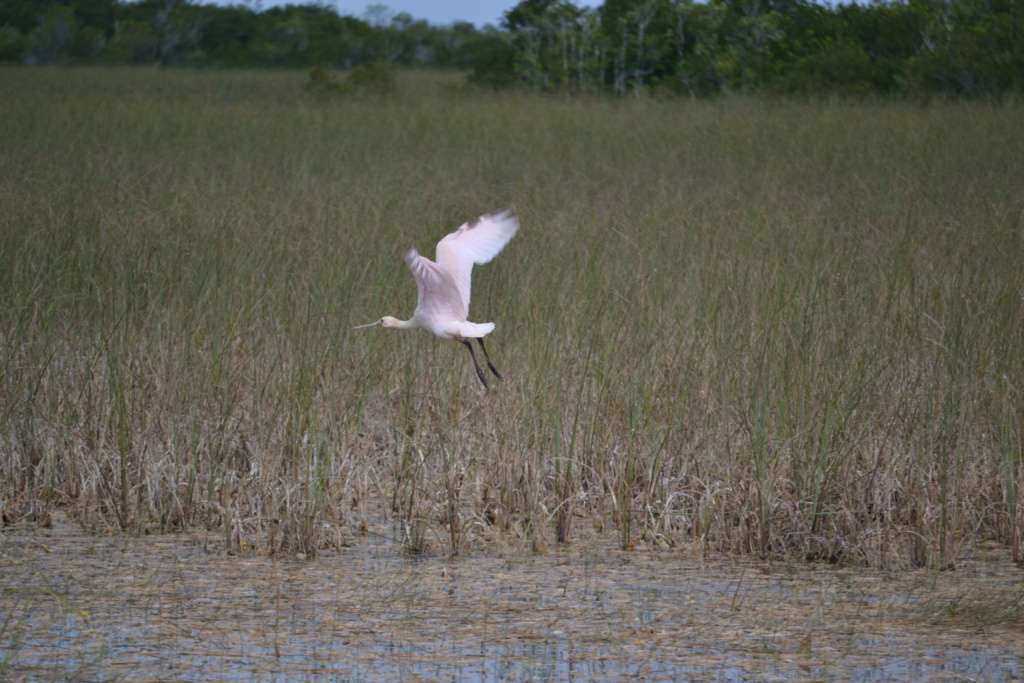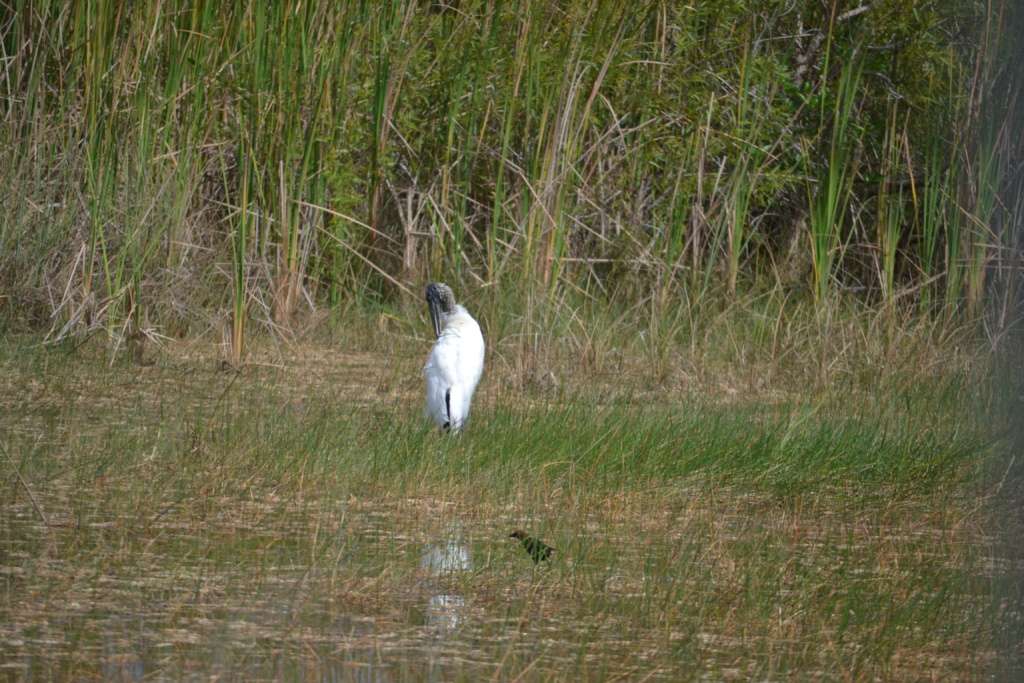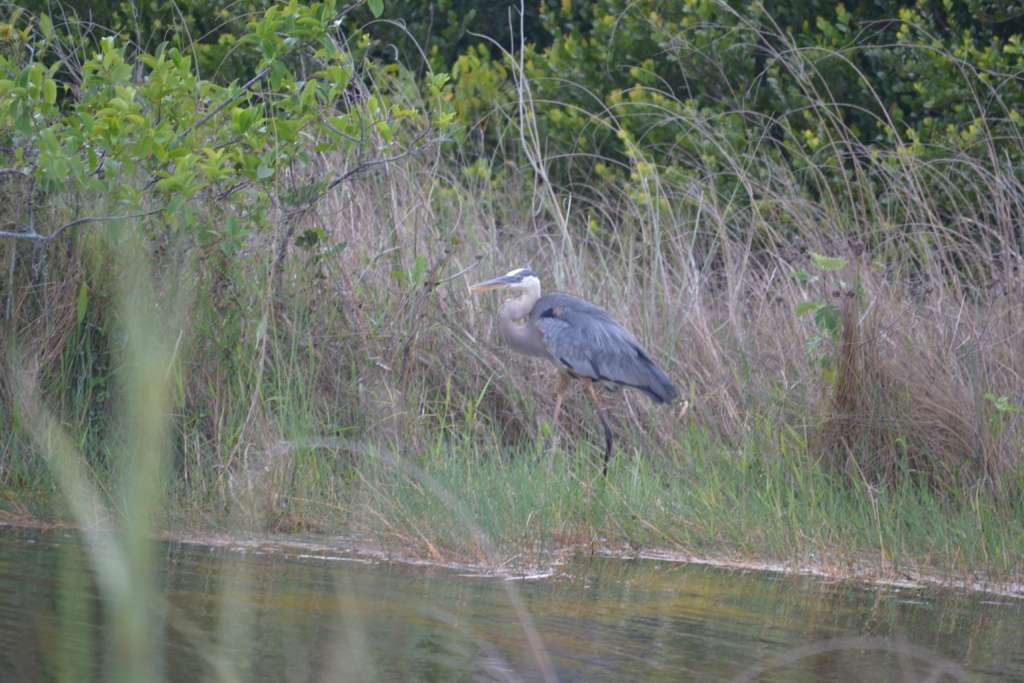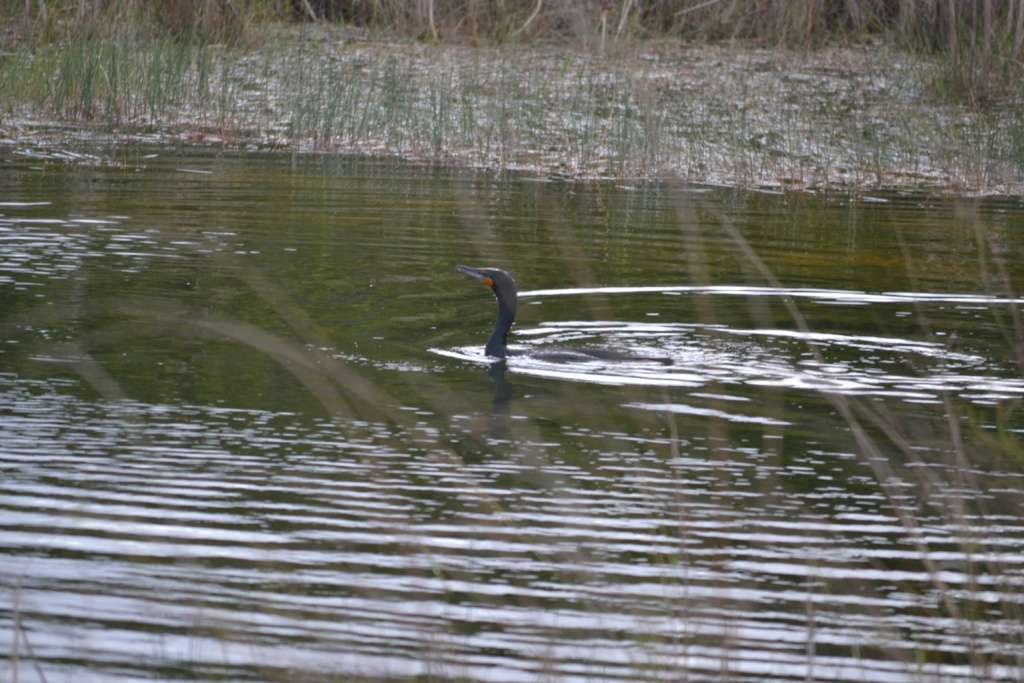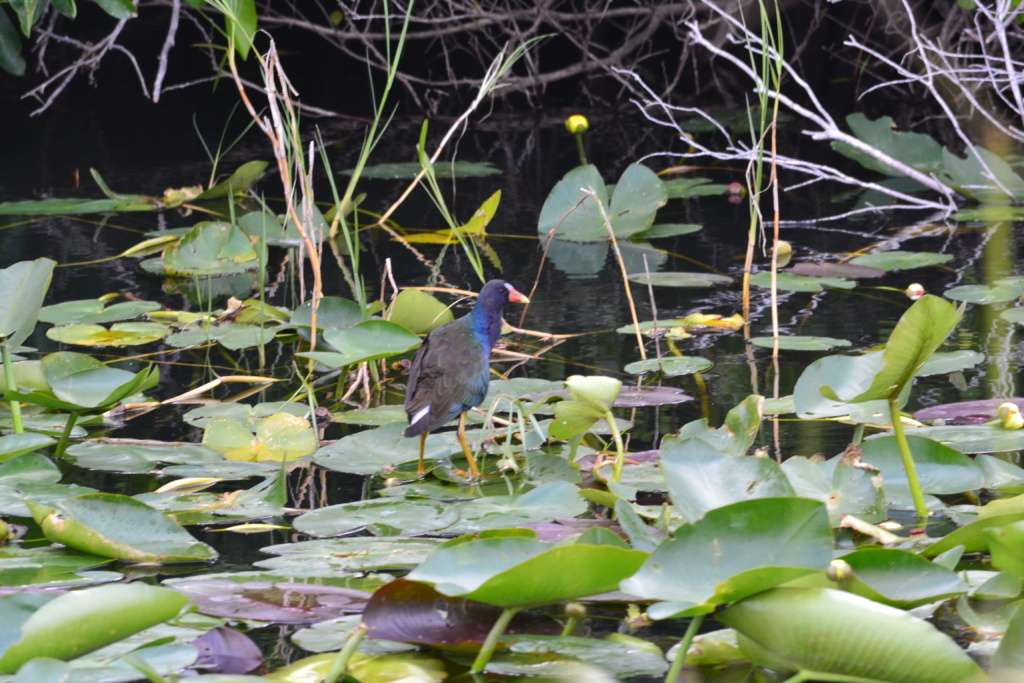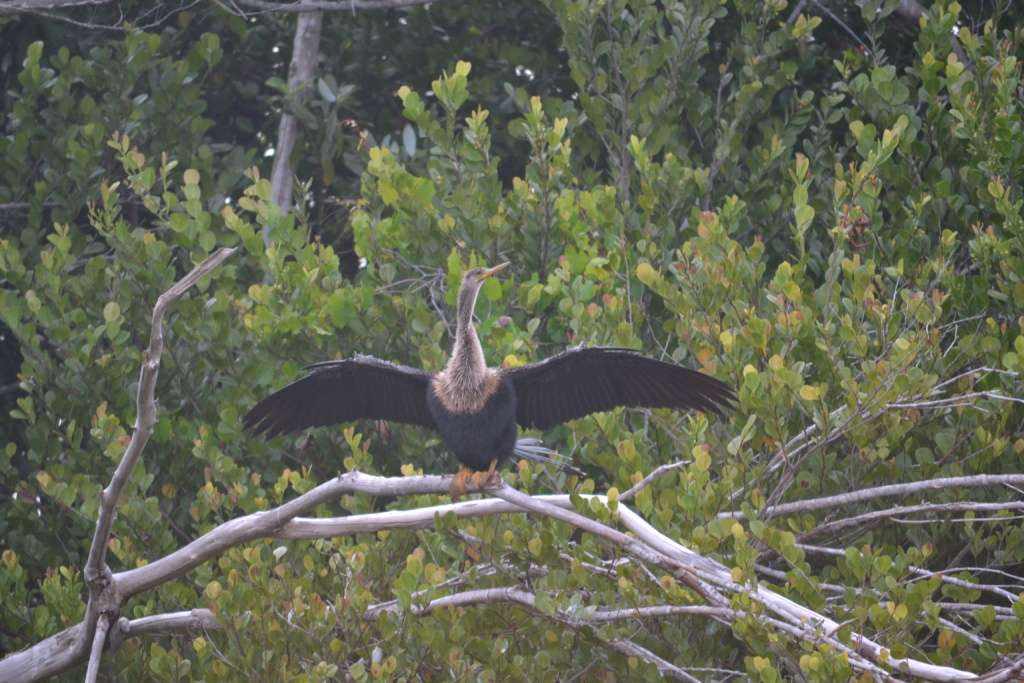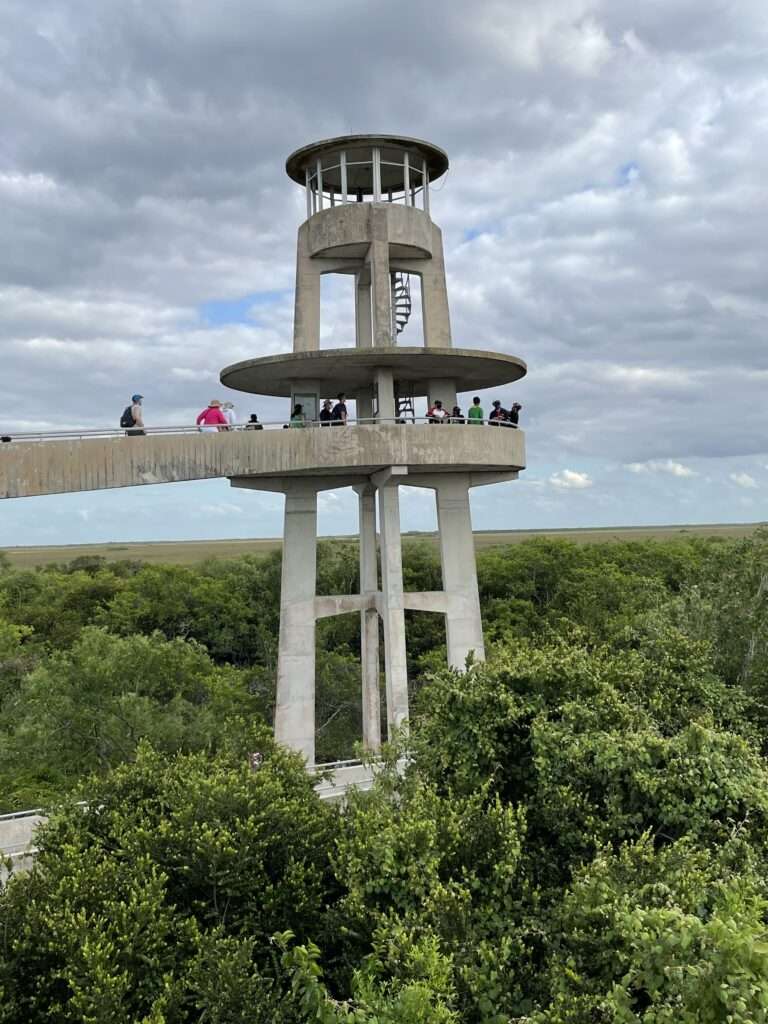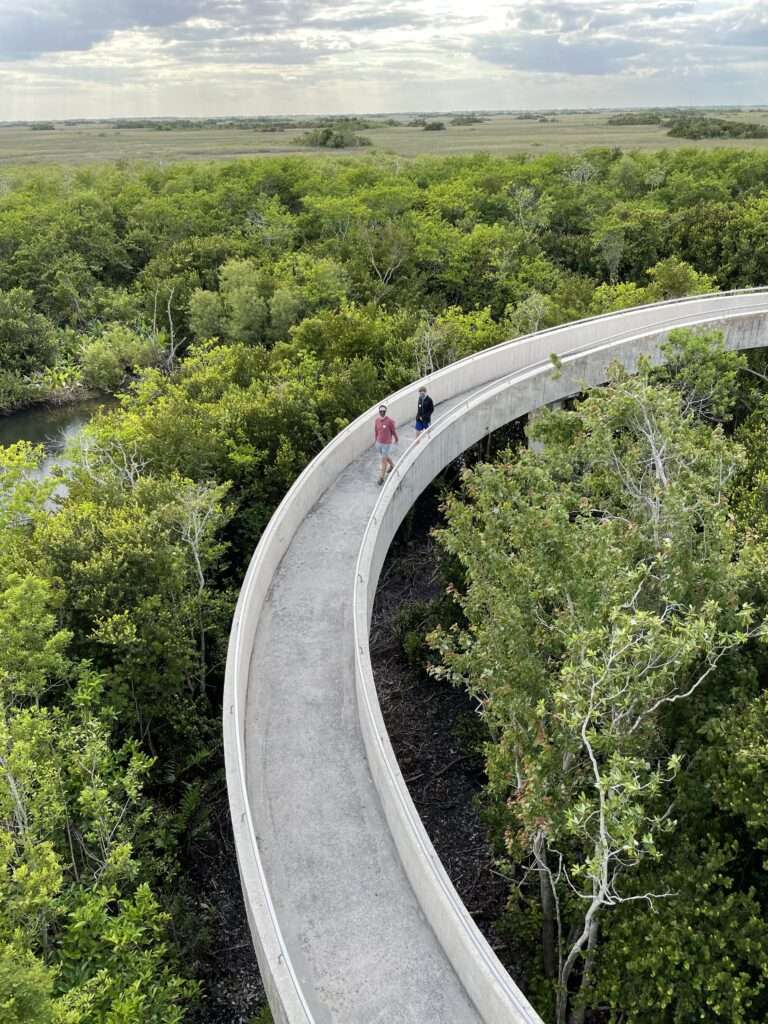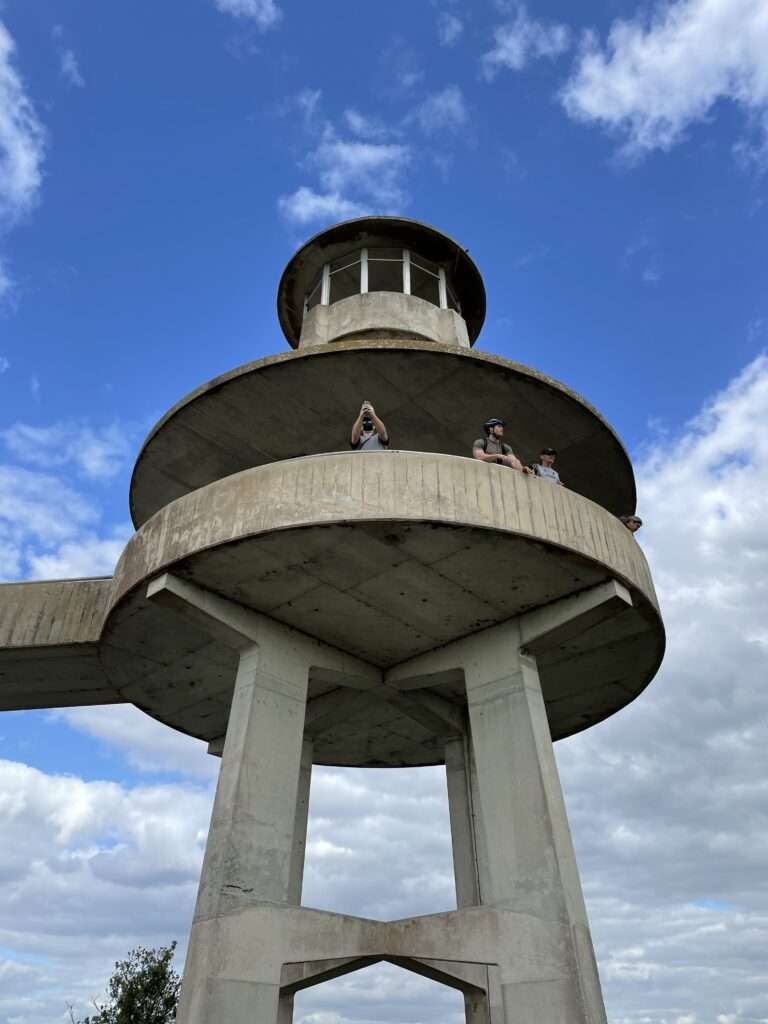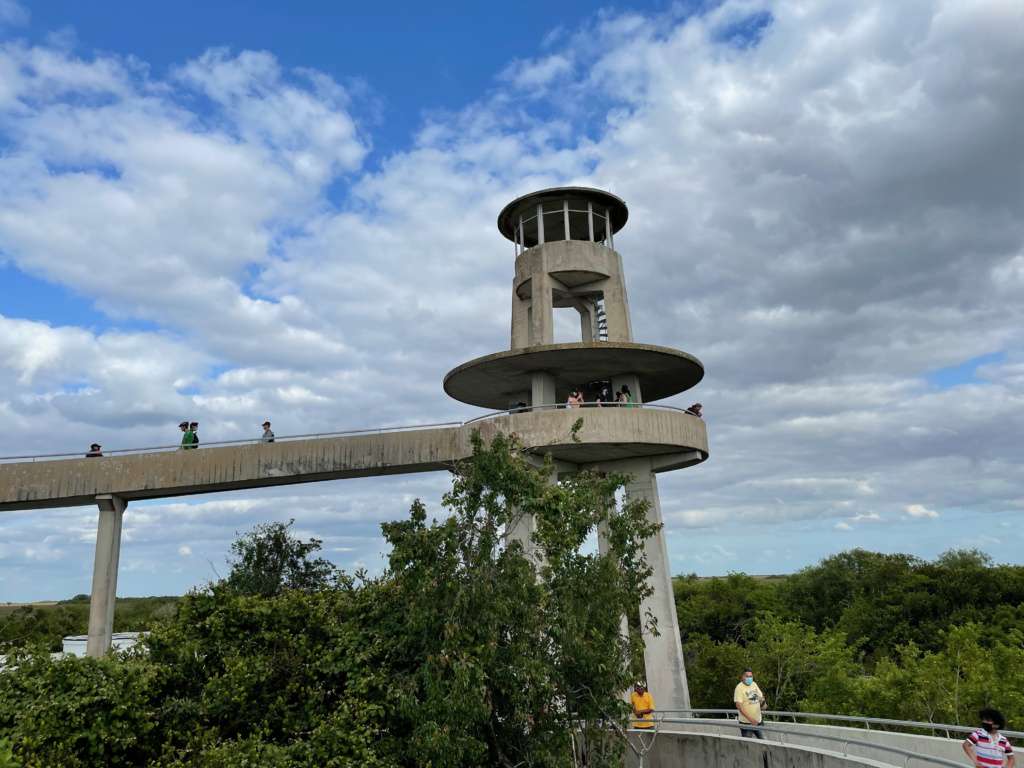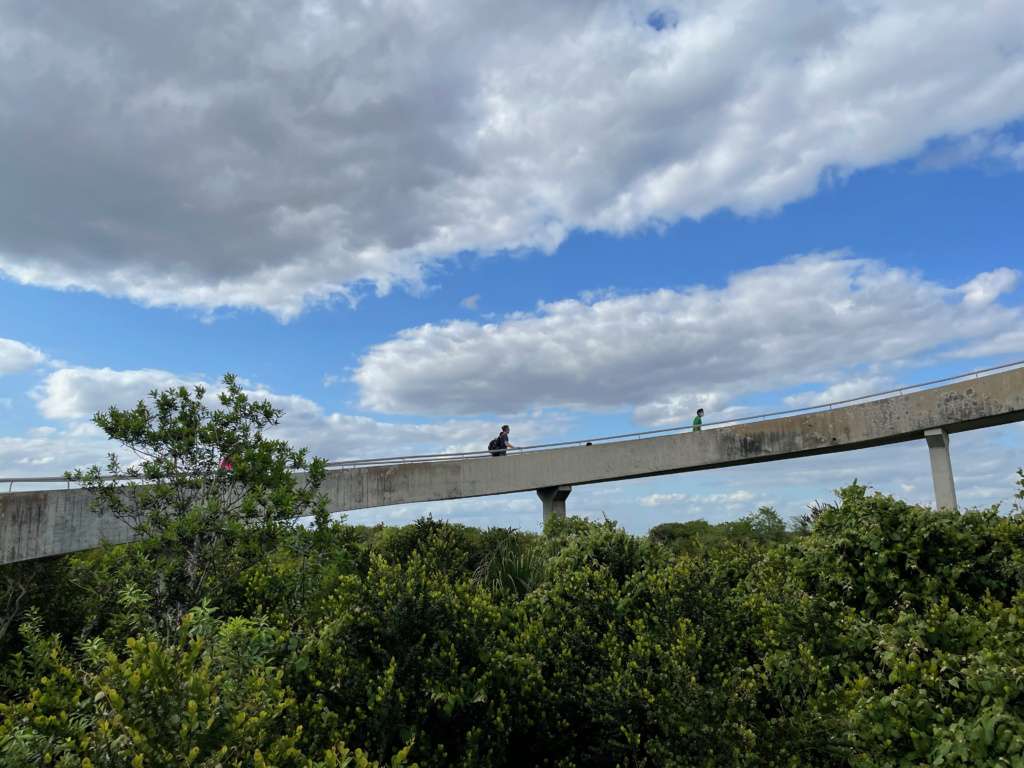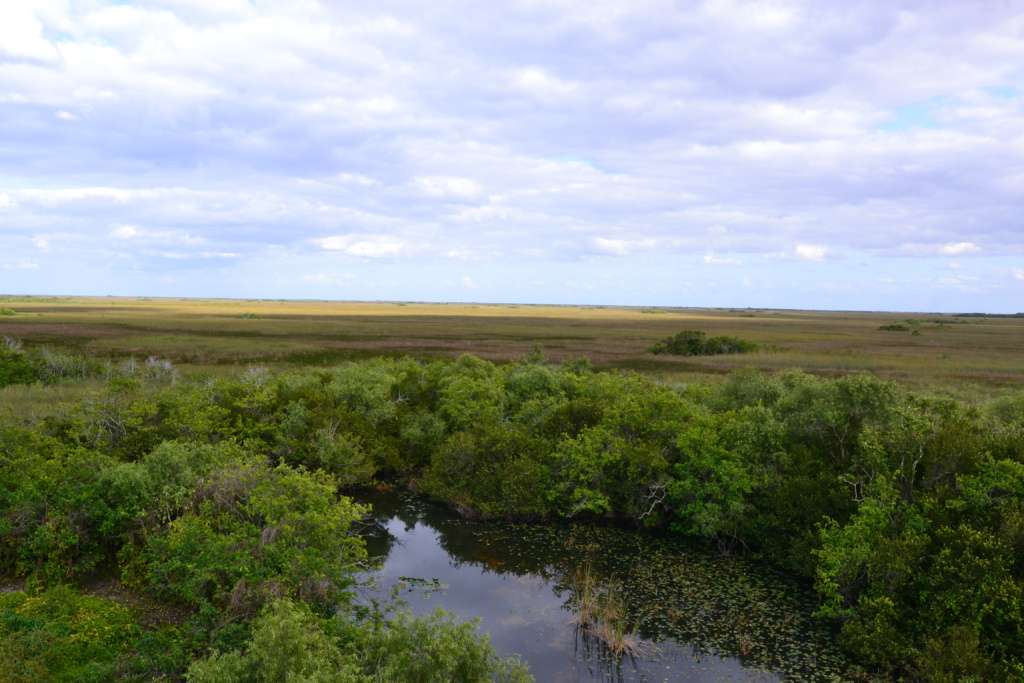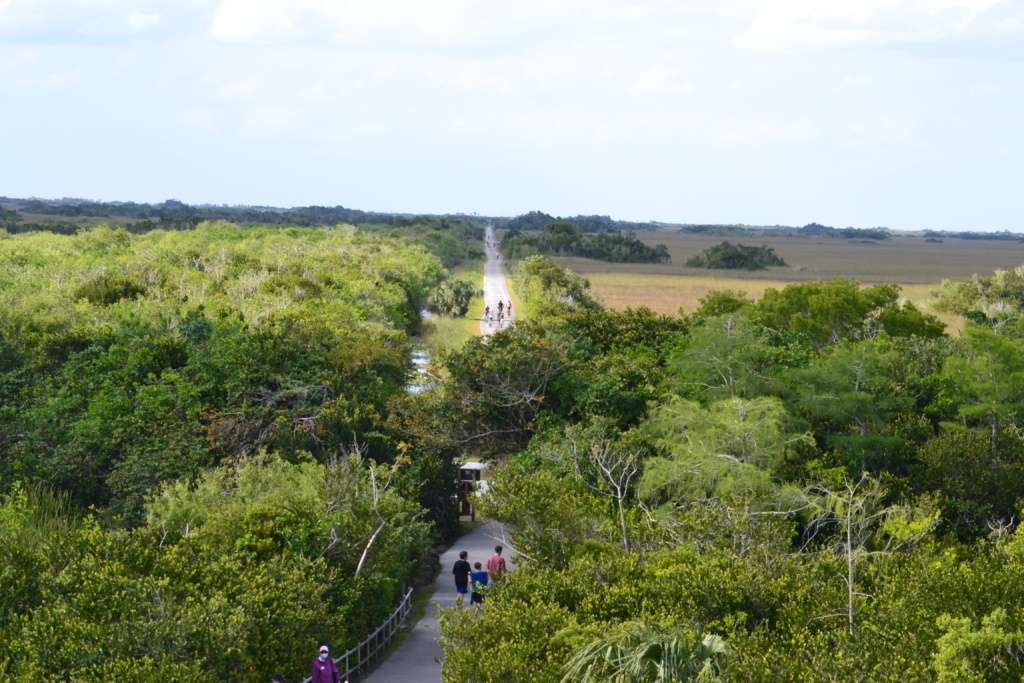Our last stop in the Everglades was a tram ride in Shark Valley. The Shark River Slough is a freshwater marsh on the northern end of the Everglades, roughly 50 miles from where we started at the Ernest F. Coe Visitor Center. There is a 15 mile loop road through the slough’s valley that you can explore on foot, bike or tram. We pre-booked our tram tickets for the last tour of the day at 4:00 and headed there after our airboat tour. There was some tiredness and general lack of interest amongst the group by this point and we debated whether or not we should go because it was a relatively long tour at 2 hours. But since we had already paid and already driven there, we decided to go ahead.
Due to covid-19, each individual group had their own row in the tram and there were plastic dividers in between the rows. Masks were required at all times, even when we got off the tram at the observation tower.
The tram path has an interesting history. Oil was discovered in the area in 1946 and Humble Oil Company built a seven mile trail to its well by digging a trench and creating a raised path from the dirt. The oil project was abandoned due to poor oil quality and the land eventually became part of the national park. The path is now a paved road and the trench remains, serving as a wonderful collection point for water, which attracts wildlife in huge numbers.
The landscape here was similar to what we had seen throughout the day but we learned some interesting additional facts about the area and its ecology from our tour guide, a National Park Ranger. He and the driver were also great at spotting wildlife and they stopped the tram often to point things out and let people take pictures.
Our visit was right at the end of the dry season, which is when you are likely to see the most wildlife here. We saw tons of alligators lounging in the shallow waters or laying in the sawgrass. My son was keeping count of our alligator spottings and by the end of the day we were up to 86! Yet somehow each one was still fascinating. Seeing these animals up close is really awe-inspiring.
One fascinating fact about the Everglades is that it is the only place in the world where alligators and crocodiles co-exist. While most of the crocodiles live in the southern region of the park, Shark Valley does have one resident crocodile. Nobody knows exactly how he got there or why but he has lived there for some time. And we were lucky enough to spot him!
Aside from the many alligators (and one crocodile!) that we spotted, there were an amazing number of birds in Shark Valley. In the winter more than 360 species live here. This is definitely the part of the park where we saw the most birds. I don’t think we necessarily saw a lot of different birds than we had seen before; we just saw a whole lot more of them. It was really stunning to see flocks of birds take off and fly across the sawgrass. And seeing only the head of a swimming double crested cormorant before it dove underwater to catch a fish was amazing.
What we didn’t see was any mammals. We learned that the mammal population of the Everglades has been decimated by an invasive species, the Burmese python. Popular as exotic pets in the 1980s, some snakes inevitably escaped or were released by irresponsible owners when they grew too large. But the population really exploded when Hurricane Andrew struck south Florida in 1992 and a python breeding facility was leveled, leading to the escape of hundreds or even thousands of snakes. The snakes eat basically anything, from rabbits to wading birds to deer, but they have hit the small and medium sized mammal populations especially hard. The population of raccoons in the Everglades dropped over 99% between 1997 and 2012! The Burmese python has no natural predators and despite hunting and other eradication efforts, their population continues to grow unchecked and threaten the area’s unique biodiversity.
While the wildlife is a big draw to Shark Valley, apparently the National Park Service did not think it was enough back in the 1960s. In order to draw more tourists to the area, they built a 65 foot tall tower with panoramic views up to 20 miles on a clear day. The tower has a cool circular ramp design and a 360 degree view from the top. The tram tour stops here for about 20 minutes to let you get out and explore and enjoy the views.
The views from the top were expansive but I have to say that the wildlife was still the big draw for me. But the tower was a really unique design and a fun experience that was definitely worth the trip out there.
I am glad we followed through and went on the Shark Valley Tram Tour. While it was similar to the other things we had already seen and done, I thought it was worthwhile, especially to see a greater number of birds. We also learned some additional information from the ranger and got to see a crocodile. However, I say this in light of the fact that our only other option at that point was to skip the tour, leave the Everglades and go to the hotel. If I had the entire day to do over, I would have eliminated Shark Valley and rearranged the day to start at the Flamingo Visitor Center. I think that part of the park is so different and would have offered us much more variety (and another chance to see manatees!). So in retrospect, I would have driven from Key Largo to the Flamingo entrance to explore that area and then made our way up to the Anhinga Trail and eventually the airboat tour. But we were so blown away by the Everglades in general that I am glad to have an excuse to go back.
